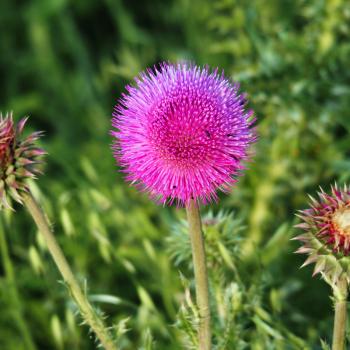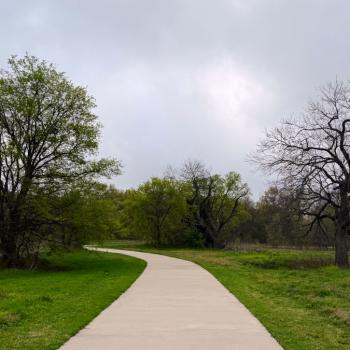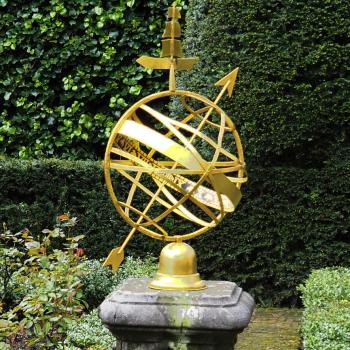There’s a story that says one day while they were both at their naturist (i.e. – nudist) retreat, Gerald Garner (the founder of Wicca) and Ross Nichols (the founder of the Order of Bards, Ovates and Druids) were discussing which holidays they should celebrate. Gardner, who thought he was recreating a Nature religion, wanted to celebrate the four solstices and equinoxes. Nichols, who was a Druid and would go on to found his own Druid order, wanted to celebrate the four Celtic fire festivals. In the end they decided to do both, and so the modern Pagan Wheel of the Year was born.
That story is probably more apocryphal than historical, but it’s certainly true in a mythical sense. The fire festivals of Imbolc, Beltane, Lughnasadh, and Samhain are attested in pre-Christian Celtic lore – they’ve been celebrated for over two millennia. The solstices and equinoxes are natural phenomena – they’ve existed for as long as the Earth has been revolving around the Sun, and the Winter Solstice may be humanity’s oldest holy day. But putting all eight together into the Wheel of the Year as we know it is a mid-20th century invention.
We don’t have much in the way of ancient Pagan lore around the Summer Solstice. Most of the customs we know date from the Christian era, though some from the Baltic region certainly look Pagan. We don’t even have many names for it.
And that’s OK. Religious authenticity does not come from doing exactly what people did centuries ago. It comes from building and maintaining relationships with Nature, with our Gods, and with each other, in ways that are meaningful and helpful to us here and now. Our lack of knowledge about how our ancestors celebrated the Summer Solstice – or even if they celebrated it – simply means we have more freedom to celebrate it in ways that are right for us.
So as we approach the Summer Solstice (which can occur between June 20 and June 22 – in 2022 it’s Tuesday, June 21 at 4:13 AM CDT), let’s look at some of the ways modern Pagans celebrate this holy day.
Honor the Sun at the height of its power
If we celebrate the death and rebirth of the Sun at the Winter Solstice, it follows that we should also celebrate the Sun at the height of its power: the Summer Solstice.
The Solstice is the earliest the Sun will rise and the latest it will set (the actual times may vary by a couple of minutes due to the way we define “sunrise” and “sunset”). It’s the farthest north the Sun will rise on the eastern horizon and set on the western horizon. It’s the highest it will be in the sky at noon.
This is more extreme at higher latitudes. Here in North Texas we have 14 hours 21 minutes of daylight on the Summer Solstice. In Seattle it’s 16 hours. In Stockholm it’s 18 hours 37 minutes. And in Barrow, Alaska, the Sun rose on May 11 and it won’t set again until August 2.
Without the warmth and light of the Sun, there could be no life on Earth. We receive so much from the Sun – the least we can do is to give thanks to the Sun.
Mark the longest day
Notice I said “mark” the longest day, not “celebrate” it. I don’t have if I have Reverse SAD or if I just prefer darker and cooler days. I just know that by the middle of May I start to notice that the days are awfully long. Right now my alarm clock is unnecessary, because birds are waking me up an hour before sunrise… which is about 45 minutes before I have to get up.
The worst of the Texas Summer is yet to come. Our hottest months are July and August. But once we pass the Summer Solstice I know the days will be getting shorter, and although the blast furnace heat is coming it won’t last forever.
Worship a Sun God
Or a Sun Goddess. Most of us think of the Sun as masculine and the Moon as feminine, but some cultures saw that reversed.
For me, when I hear “Sun God” I think of the Egyptian Ra. Denton CUUPS performed an Egyptian Temple Ritual at the Summer Solstice every year for 15 years, and many of those were dedicated to Ra, in whole or in part. We’re doing something different this year, but we’ll be honoring the Gods of Egypt again in July.

Celebrate a restful pause
If we know little about how the Summer Solstice was celebrated in ancient times, perhaps that’s because there wasn’t a lot going on. The height of the Sun doesn’t have the spiritual and emotional connections that the rebirth of the Sun has. From an agricultural perspective, there’s not a lot going on either. Planting was finished in the Spring and the harvest won’t begin till later in the Summer. There’s the perpetual work of weeding, watering, and keeping young crops from being eaten by insects, birds, and other animals. But Midsummer is a relatively slow time.
It’s also a restful pause for those in the education world, whether as students or as teachers. I remember being a kid and going from excitement that school was out to boredom from nothing to do in about three weeks. I would not go back to that for anything.
But especially in a country where most people get two weeks’ vacation or less, it’s good to stop for a moment and rest whenever we can.
Because before too long, we’ll be back at work again.
Things are reversed in the Southern Hemisphere
In the Southern Hemisphere, things are reversed. They’re getting ready to celebrate the Winter Solstice and move into their coldest part of the year. But close to 90% of the world’s population lives in the Northern Hemisphere, so we tend to assume our way is the “right” way – even though it’s just the most populous way.
Summer Solstice Resources
Summer Solstice – A Solitary Ritual
8 Things to do for Summer Solstice as a Solitary Pagan
7 Ways to Celebrate the Summer Solstice by Jason Mankey
Sunrise and Sunset Times from TimeandDate.com




















